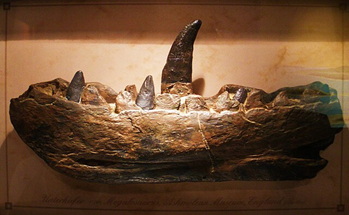“A vast and terrifying building”: a fictional account of entering a workhouse
Oxford had many workhouses in the 18th and 19th centuries. After the Poor Law amendment act of 1834, the state took over responsibility from the parishes and in Oxford built two large workhouses, one on the Cowley Road and one in Headington. A small team from the Museum of Oxford’s Adult learning Groups is investigating and writing about them. This fictional story below illustrates what poverty and entering a workhouse was like in the 1860s. At the time, two-thirds of women entering workhouses were forced to do so after the death of the main breadwinner.
Sarah
My name is Sarah and I was born in Eynsham in 1850. I married a local boy, a farm worker, at sixteen. We lived with my parents but when my husband lost his job due to the use of new machinery we had to leave with our three young children. Our parents had no money to keep us. We walked to Oxford pushing a small handcart with our few belongings and the baby on top.
After hours tramping the dirty streets of St. Ebbes carrying two of our children, trying to find a room, we were forced to take a small lodgings in a tenement. The smell was terrible as the bucket in the hall was the toilet and its stench filtered through a damaged door into our one room. With no other choice, my husband left immediately to find work while I unrolled our two straw mattresses. Fortunately he found a job at the local brewery. Not much money but we could afford the rent and some food.
I took in sewing and we managed to survive and moved to a larger room. One day my husband came home shaking with fever. Three days later he died of typhus. This was devastating as my own work could not pay the bills. I begged for a rent reprieve and the kind collector allowed me one week but no more. I visited the Guardians of the Poor at the Council offices and they allowed some bread but warned that I should consider the workhouse. I ran up too much tick with the local shop and they stopped me buying more food. One neighbour suggested that as I was comely I might attract the local students. That would break my mother’s heart and mine too.
The workhouse was on the Cowley Road, a vast and terrifying building. I stood at the entrance of this prison knowing what would come next. I clutched my children to me and wept. The entrance hall was large and bleak. The Master interviewed us and told me about the rules which I could hardly take in. Then we were taken to a small room and pinched and poked by the medical officer. The children were too afeard to cry. My eldest boy of 8, Tom, was suspected to carry TB and he was taken to be bathed and have his hair cut before he was placed in the children’s sick ward. I hugged him so tightly that he needed to be forced from me. The second and the baby were also taken to be bathed, checked for lice and disinfected. I was told William at 7 might be able to get an apprenticeship and I was lucky. The baby was removed and taken to the babies’ ward. I might be able to see them on a Sunday.
I barely remember what happened next but I think I was stripped. My own clothes were taken to be washed and stored. My hair was cut because of lice I was told and they bathed me scrubbing harshly with soap and disinfectant. Then they gave me the workhouse uniform and escorted me to the women’s dormitory. There were real beds with a small cabinet to one side, but there were so many. I was terrified. They told me God had blessed me and I should be grateful.
I never saw my children again.
********
Eight of us from the Museum of Oxford’s Adult Learning programmes are researching poverty and the workhouses in Oxford. Three of us left school aged 15, and only two of us have degrees. We will tell you more about our findings in the next blog.
Written by Katherine Hughes volunteer and leader of the Adult Learning programmes.
Want to write your own Oxford-inspired post? Sign up as a volunteer blogger.



